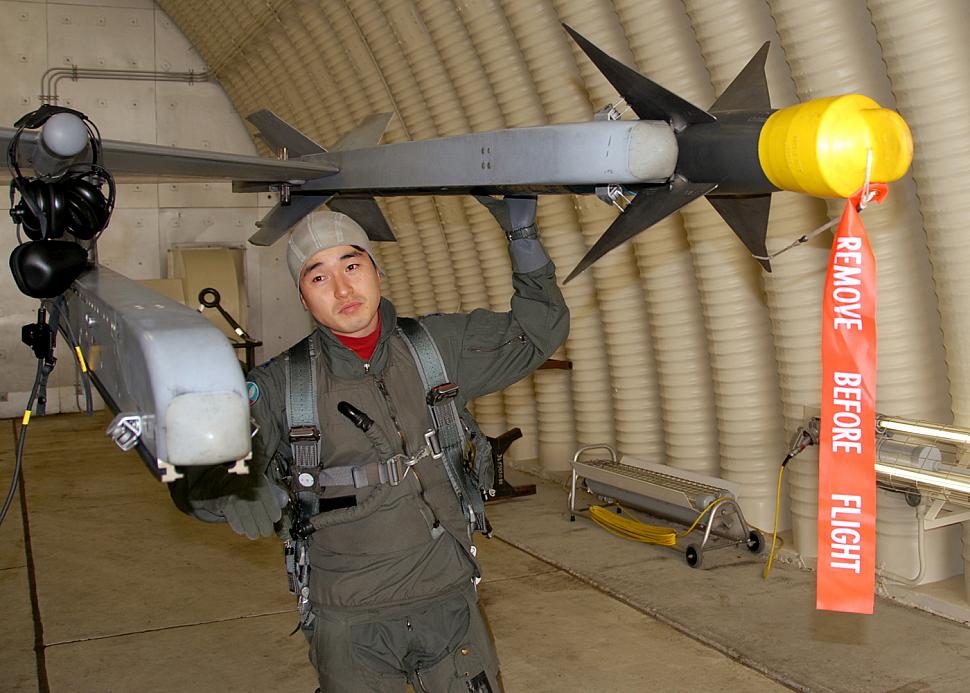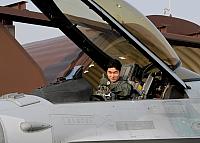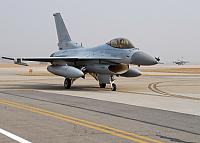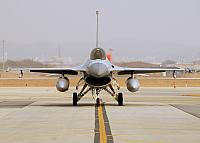Fighter Jet News
F-16 Fighting Falcon News
RoKAF Airmen participate in buddy wing program
December 14, 2007 (by
SMSgt. Marvin Krause) -
Republic of Korea Air Force (RoKAF) airmen from Seosan Air Base visited Osan's 36th FS December 11th to 13th to participate in Seventh Air Force's quarterly "buddy wing" program.

The purpose of the buddy wing program is to exchange ideas, introduce tactics and improve interoperability between the U.S. and ROK air forces.
Two RoKAF KF-16C Fighting Falcon pilots and seven ROKAF maintenance personnel worked beside Air Force F-16C Fighting Falcon pilots and maintenance personnel for three days, sharing knowledge and building friendships. During this three-day training, Airmen from both fighter squadrons will extensively brief tactics planning and fly sorties.
"We flew two sorties of four versus two tactical intercepts," said Capt. Paul Davidson, a pilot from the 36th FS and the squadron's buddy wing project officer. "The ROKAF flew their KF-16s as number three and number four in the four-ship formations.
"This was the first buddy wing where we integrated the ROKAF into U.S. Air Force four-ship tactics. It went well and I hope future buddy wings will continue to build on these four-ship tactics with more complicated scenarios," Captain Davidson said.
"During wartime, we will fly as combined packages with U.S. Air Force aircraft, and this training will improve our tactics and communication skills," said Capt. Young-Kwon Ko, an KC-F-16C ROKAF pilot. "There are differences in ROKAF and U.S. Air Force tactics, and this training has allowed us to understand the good points of both so we can share and apply to ROKAF procedures."
"I was surprised by the way the U.S. Air Force works," said Capt. Jeong-Ho Cho, a KC-F-16C ROKAF pilot. "This was a great learning exercise but it was hard to grasp all of the information in just one visit. I would like to see more combined ROKAF-USAF operations to improve our capabilities to maintain security and peace on the Korean peninsula."
Captain Cho also credits the program for giving him a better understanding of the U.S. Air Force's tactics and that he will share his buddy wing experience with other ROKAF pilots in his squadron.
"It was good to get to know fighter pilots in the ROKAF. We have similar interests, a desire to improve our tactics and a love for flying. The weather was great on the second day's sortie and it was an impressive sight to see a four ship of F-16's in a wall formation high above the clouds. The ROKAF pilots were very professional, capable pilots and were able to integrate well with our flight," Captain Davidson said.
The buddy wing program is held quarterly for F-16 squadrons. It's designed to rotate every quarter between U.S. and South Korean bases.

Capt. Young-Kwon Ko, a KF-16 Fighting Falcon pilot assigned to the 157th TFS at Seosan AB, preflights his KF-16 aircraft prior to a buddy wing sortie with pilots from the 36th FS
Two RoKAF KF-16C Fighting Falcon pilots and seven ROKAF maintenance personnel worked beside Air Force F-16C Fighting Falcon pilots and maintenance personnel for three days, sharing knowledge and building friendships. During this three-day training, Airmen from both fighter squadrons will extensively brief tactics planning and fly sorties.
"We flew two sorties of four versus two tactical intercepts," said Capt. Paul Davidson, a pilot from the 36th FS and the squadron's buddy wing project officer. "The ROKAF flew their KF-16s as number three and number four in the four-ship formations.
"This was the first buddy wing where we integrated the ROKAF into U.S. Air Force four-ship tactics. It went well and I hope future buddy wings will continue to build on these four-ship tactics with more complicated scenarios," Captain Davidson said.
"During wartime, we will fly as combined packages with U.S. Air Force aircraft, and this training will improve our tactics and communication skills," said Capt. Young-Kwon Ko, an KC-F-16C ROKAF pilot. "There are differences in ROKAF and U.S. Air Force tactics, and this training has allowed us to understand the good points of both so we can share and apply to ROKAF procedures."
"I was surprised by the way the U.S. Air Force works," said Capt. Jeong-Ho Cho, a KC-F-16C ROKAF pilot. "This was a great learning exercise but it was hard to grasp all of the information in just one visit. I would like to see more combined ROKAF-USAF operations to improve our capabilities to maintain security and peace on the Korean peninsula."
Captain Cho also credits the program for giving him a better understanding of the U.S. Air Force's tactics and that he will share his buddy wing experience with other ROKAF pilots in his squadron.
"It was good to get to know fighter pilots in the ROKAF. We have similar interests, a desire to improve our tactics and a love for flying. The weather was great on the second day's sortie and it was an impressive sight to see a four ship of F-16's in a wall formation high above the clouds. The ROKAF pilots were very professional, capable pilots and were able to integrate well with our flight," Captain Davidson said.
The buddy wing program is held quarterly for F-16 squadrons. It's designed to rotate every quarter between U.S. and South Korean bases.
Courtesy of 51st Fighter Wing Public Affairs
Additional images:
Related articles:
Forum discussion:
Tags
- RoKAF and USAF Airmen participate in Buddy Wing Program (2007-10-24)
- 8th FW & RoKAF Buddy Wing Program (2007-06-27)
- F-16 Fighting Falcon news archive
Forum discussion:
- Start a discussion about this article in the F-16.net forum.
Tags



